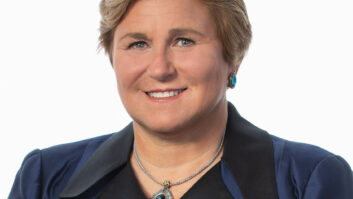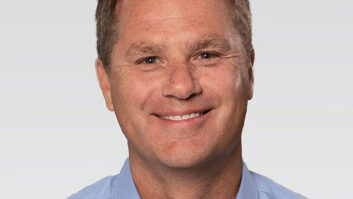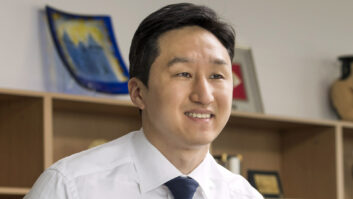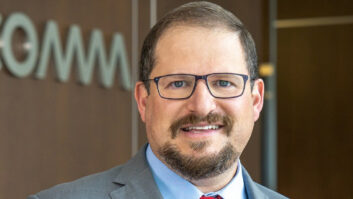Samsung Electronics’ Dae Je Chin, president & CEO of Digital Media Business, used his Inter-national CES keynote speech to highlight his company’s position in digital convergence and show three such products during the show.
Key to Samsung’s U.S. strategy is the company’s fully integrated Home Media Center, developed in cooperation with Microsoft. The Center integrates all home communications devices through its patented Family Information Management System, which resides on the home server and connects all PCs, TVs, VCRs, set-top boxes and appliances in the home. The system’s A/V node ensures backward compatibility, converting the network’s signals from digital to analog so that predigital TVs can be accommodated.
Samsung said the Home Media Center will include new Microsoft technologies code-named “Freestyle” for Windows XP. (See story on Bill Gates’ CES speech on p. 1 for further details.)
Home networking is “now easy to use and affordable,” said Chin in a prepared statement. “We’ve worked hard with Microsoft to deliver all the value that media centers can offer — it’s something everyone’s talked about for years, but now it’s finally convenient, and it fits in the typical family budget.”
The Home Media Center is expected to launch in the fourth quarter.
Also launching in 2002 is the NEXiO wireless handheld PC, a 3G wireless phone and PDA that is said to deliver full wireless connectivity with a 64-megabyte flash memory.
The NEXiO is Windows CE 3.0 compatible and uses Internet Explorer for Web surfing. The device also features optional digital camera, 802.11b wireless LAN and GPS modules using built-in industry standard USB port. The product is shipping in South Korea, and a very similar product will be available from Samsung in the United States during the third quarter.
“For too many years, digital products were out of reach for most people — too complicated, too hard to use, too expensive,” he said. “Now for the first time, barriers to the digital lifestyle are collapsing.”













